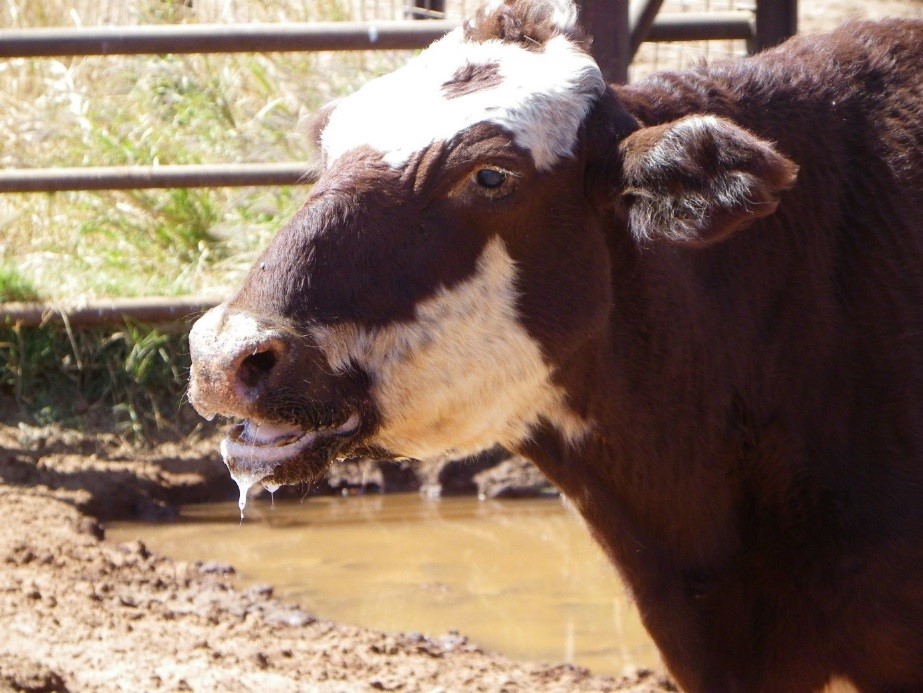Foot-and-mouth disease excluded in salivating cattle in Alice Springs
The manager of a property in the Alice Springs region reported four 2-3 year-old crossbred Hereford steers with signs of weight loss, salivation and loss of muscle/movement control. The steers had been recently yarded and were due to be transported for slaughter. Examination of stock by DPIR veterinarian found affected steers to have the symptoms reported, as well as being in respiratory distress. The most severely affected steer was euthanased for post mortem examination.

Figure 2 The affected steer was salivating and in respiratory distress.
Post mortem examination revealed water in the lung tissue and evidence of a healing tongue lesion. While it was suspected that the steer was persistently infected with bovine viral diarrhoea virus, samples were referred to the Australian Animal Health Laboratories (AAHL) to exclude exotic diseases including Foot-and-mouth disease (FMD) and Vesicular stomatitis (VS) for the tongue lesion, and Haemorrhagic septicaemia and Contagious bovine pleuropneumonia for the lung lesion. Tests excluded all exotic diseases.
Bacteriology culture found moderate growth of a Pasteurella multocida from the lung lesion. The diagnosis of the lung lesion was severe pneumonia.
Pasteurella multocida also plays a leading role in the development of bovine respiratory disease (BRD), a condition also known as ‘shipping fever’. The condition commonly arises where the causative organism becomes established by secondary infection, following a primary bacterial or viral infection. This usually occurs after stress. In the case of BRD, pasteurellosis is usually preceded by viral infection with either infectious bovine rhinotracheitis (IBR caused by bovine herpes virus type 1), bovine viral diarrhoea virus (BVDV), para-influenza type 3 (PI3) or bovine respiratory syncytial virus (BRSV). The viral inflammation of the respiratory passage initially causes lung lesions and suppresses immunity allowing the bacteria to proliferate. BRD is a major production issue for beef feedlots and dairy.
While the IBR serological blood test results were negative, a positive BVD antigen ELISA blood test and a negative BVDV AGID antibody blood test confirmed the steer was persistently infected (PI) with BVDV. The P. multocida bacterial infection combined with the viral BVDV infection led to the BRD syndrome, intensified by the stress of mustering and yarding.
BVDV Type 1 is endemic in the Northern Territory cattle population, with most herds and up to 70% of cattle exposed. In-utero infection can result in PI animals which show signs of poor development, ill-thrift and early death. These PI cattle are immune-suppressed and may also develop the more acute and often fatal mucosal disease which presents as severe gastro-intestinal ulceration.
Vaccines are commercially available for the main respiratory viruses and bacteria that contribute to BRD, including IBR and BVDV. The vaccines are not widely used in Territory, but should be administered prior to entry into the feedlot and mixing of cattle.
A recommendation was made to cull the remaining three clinically affected steers. There have been no further clinical problems reported from this herd of cattle.
 |  |
Figure 3 Affected steer in poor condition. | Figure 4 Other steers from the same group were in excellent condition. |
Give feedback about this page.
Share this page:
URL copied!